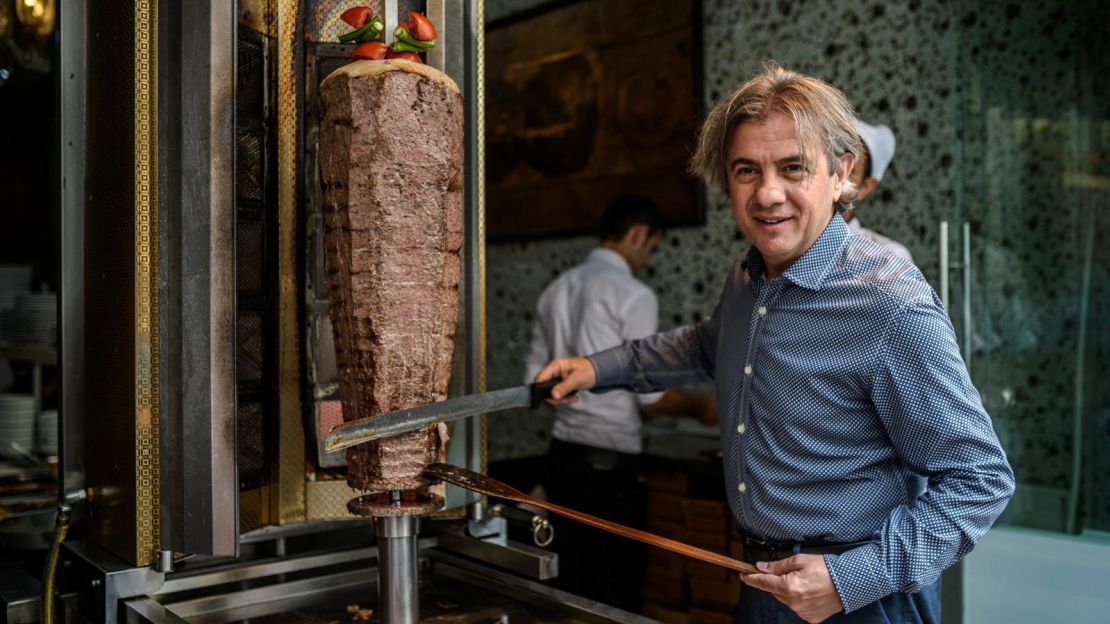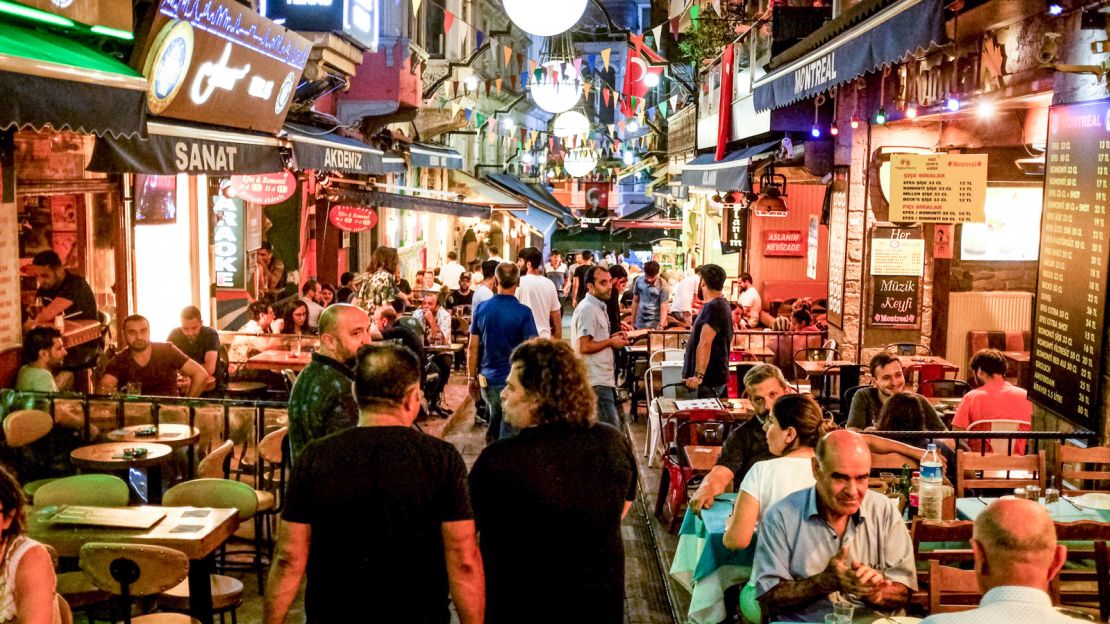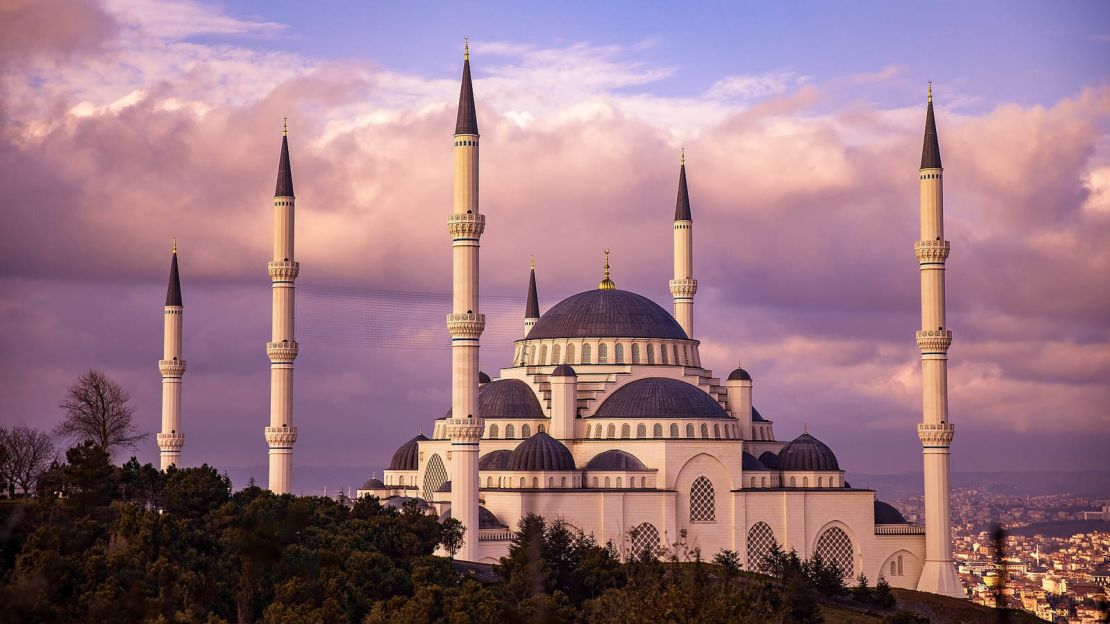Istanbul maybe the city where continents meet, but it’s also where they meat – its chaos of culinary influences defined by their myriad recipes for the famous Turkish kebab.
It’s made a superstar out of one meat-loving chef, Internet sensation Salt Bae, and continues to tantalize the taste buds of millions of visitors every year.
Food and the hospitality that goes with it, say the experts, is the best way to understand the collision of cultures brought to Istanbul by migrants from across not just Turkey but Eastern Europe, North Africa and the Middle East.
In fact, Istanbul is probably the only place in Turkey where you can sample cuisine from every region in the country and beyond.
One dish in particular.
“We could travel around Istanbul eating kebab only, and experience every region of Turkey,” says Ansel Mullins, writer and founder of food tour company Culinary Backstreets.
“Regionality is a really important subject, the migration of people from all over Turkey to Istanbul for economic reasons, or to escape dangerous places in the country in previous decades,” he adds.
“People ended up in Istanbul, and I think one of the great signifiers of culture or things that you miss shows up on the plate.”
Cultural tornado
While Istanbul’s population has increased dramatically in more recent times, it’s long been an influential city, having served as the capital of three major empires – Roman, Byzantine and Ottoman.
The city’s make up, with the Bosphorus Strait acting as a natural border between its European and Asian sections, has played a huge role in its progression.
“There is a cultural tornado going on here,” says Turkish psychologist and author Akilah Azra Kohen, who lives in Istanbul.
“Being in the middle of two continents, this is a necessity for combining all of the cultures and all of the people’s needs.”
There’s no denying that Istanbul’s chaotic vibe can be difficult to navigate at times.
But according to Mullins, the best way to understand this majestic city is to examine the cuisine served up in its 39 districts and 936 neighborhoods.
Meat map
From region to region, there are subtle differences in traditional Turkish cuisine that can be traced back to the roots of residents who moved here from different parts of Turkey.
Especially kebabs.
In some Western countries, the word “kebab” is synonymous with cheap fast food – often consumed after a night out. In Turkey it describes not just meat, but anything roasted over an open fire.
Döner kebab, which literally translates to “rotating kebab,” is one of the most well known internationally, as is Shish kebab, small cubes of meat or fish threaded on a skewer and grilled, but there are many other different forms.
The area of Kadinlar Pazari in the Fatih district is famed for its Buryan kebab, as well as perde pilavı, both of which are specialities of Siirt, the town on Turkey’s Syrian border where much of the residents here hail from.
Preserving tradition

Made with lamb cooked over coal in an underground pit, Siirt-style Buryan kebab is a much-coveted delicacy.
The best Buryan kebab in Istanbul can be found at local restaurant Siirt Seref, according to those in the know. (Siirt Seref, Zeyrek Mh., İtfaiye Cd. No:4, 34083 Fatih/İstanbul; +90 212 635 80 85).
“I think this place is a great representation of the city,” Mullins says of the popular restaurant run by the Avci family, who migrated her from Siirt many years ago.
“It’s the story of a family coming from a faraway place and preserving a tradition.
“But at the same time, fitting into this urban atmosphere of Istanbul – and thriving.”
Lamb is likely to be prepared in a totally different way in areas neighboring Kadinlar Pazari.
In fact, you could venture down the street and witness chefs grilling lamb over hot coals, as is custom in the city of Urfa in southeastern Turkey, which the Urfa kebab is named after.
In Siirt Seref, owner Levent Avci takes great pride in showcasing his hometown’s pit cooking process, while his father, former owner Seref Avci, looks on to ensure that everything is done as it always has been.
Forgotten recipes

This level of dedication is commonplace in the city, particularly among members of the older generation, who are hugely proud of their culinary traditions and intent on preserving them.
In fact, influential chef Musa Dağdeviren is so passionate about safeguarding the legacy of Turkish cooking practices that he’s developing an institute to train the next generation in traditional gastronomy.
“People who live in the cities don’t know their traditions,” Dağdeviren, who hails from the town of Nizip in southern Turkey, tells CNN.
“They seem to have completely forgotten about their culinary past.”
Dagdeviren has appeared on Netflix series “Chef’s Table” and is renowned for re-discovering and rejuvenating Turkish recipes on the verge of extinction.
His restaurant Ciya Sofrasi, situated on the Asian side of Istanbul, attracts customers from all over the world thanks to its daily changing menu made up of traditional regional dishes. (Ciya Sofrasi, Caferağa Mahallesi, Güneşli Bahçe Sk. No:43, 34710 Kadıköy/İstanbul; Phone: +90 216 330 31 90)
Dagdeviren has been instrumental in ensuring the regional recipes in villages throughout Turkey are recorded, not only by adding many to his restaurant’s menu, but also in books issued through Ciya Publications, a publishing house founded by his wife Zeynep Dağdeviren.
“In a way, traditional dishes form the basis of our heritage,” he adds.
“We need to protect the values of our land and culture, for it’s these facets that form the backbone of past civilizations.”
Meat performances
Another passionate restaurateur helping to put Turkey’s food scene in the spotlight, albeit for less than conventional reasons, is Nusret Gökçe, also known as “Salt Bae.”
Born in Erzurum on the Asian side of Istanbul, his culinary career began earlier than most.
Gökçe was forced to quit school and take up work as a butcher’s apprentice when he was aged about 11 due to his family’s limited finances.
He set up an eatery in Turkey’s largest city after working in restaurants in Argentina and went on to become an online sensation thanks to his flamboyant style of preparing and sprinkling salt on meat.

Gökçe, now 36, used his Internet fame to turn his Istanbul restaurant into a worldwide eponymous chain of steakhouses, with branches in New York, Miami and Dubai.
The popularity of the Nusr-Et restaurants is credited to the former butcher’s “performance” skills and he enjoys putting on a show for diners.
“This work has become my everything,” says Gökçe, who currently has 18 million Instagram followers.
“When I see the meat, I mean – to touch it – to cut it – to serve it – what people feel when they eat it, when I see all of that it makes me happy.”
While Gökçe’s story is unusual, his success is testament to Istanbul’s powerful connection to food.
Miracle city
It’s hard to find a more hospitable city than this one. Visitors don’t need to travel far before being offered something to eat or drink by a well-meaning resident.
While this cordiality remains as strong as ever, to say Istanbul’s resilience has been tested by the civil war in Syria, which broke out in 2011, is something of an understatement.
A series of terror attacks, not to mention an attempted coup in 2016, led to Turkey receiving a Level 3 travel advisory categorization, but tourism is beginning to rise again.
It’s still unclear what the future holds for Istanbul, but it seems the true nature of this bustling metropolis remains the same.
“It’s a miracle city,” reflects Mullins. “There’s an incredible chaotic ballet that takes place here every day, accompanied by the orchestra of car horns, but it works.”






















